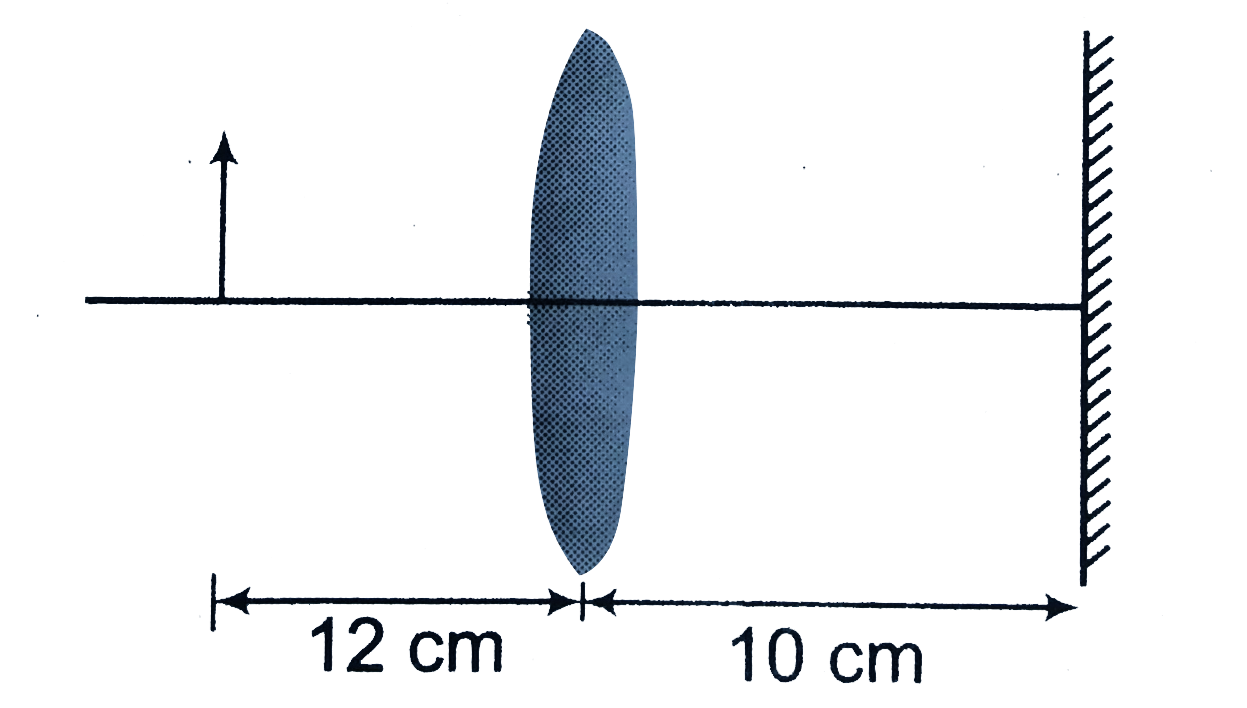A concave mirror of focal length 2cm is placed on a glass slab as shown in the figure. The image of point object O formed due to reflection at mirror and then refraction by the slab

is virtual and at 2cm from pole of the concave mirror
is virtual and on the pole of mirror
is real and on the object itself
None of these
The correct Answer is:D
Reflection from the concave mirror, I1

1v+1−1=1−2⇒v=+2cm
Shift due to slab=(1−1n)t
=(1−2/3)(9cm)
=3cm
Now, slab will make next image at a distance 3 cm
from I1 in the direction of ray of light, i.e. at O
itself but it is virtual, as the ray of light has crossed
the slab and we are making image behind the slab.
Topper's Solved these Questions
- REFRACTION OF LIGHTBOOK - DC PANDEY ENGLISHCHAPTER - REFRACTION OF LIGHTEXERCISE - Single Correct Option
3 Videos
- REFRACTION OF LIGHTBOOK - DC PANDEY ENGLISHCHAPTER - REFRACTION OF LIGHTEXERCISE - more than one correct option
1 Video
- REFRACTION OF LIGHTBOOK - DC PANDEY ENGLISHCHAPTER - REFRACTION OF LIGHTEXERCISE - Subjective Questions
8 Videos
- REFLECTION OF LIGHTBOOK - DC PANDEY ENGLISHCHAPTER - REFLECTION OF LIGHTEXERCISE - Subjective
9 Videos
- SEMICONDUCTORSBOOK - DC PANDEY ENGLISHCHAPTER - SEMICONDUCTORSEXERCISE - Subjective
12 Videos
Similar Questions
An object is placed at a distance of 40 cm from a convex lens of focal length 20cm. On the far side of the lens, a concave mirror of focal length 10cm is placed such that the distance of the object from the concave mirror is 100 cm. Then the final image which is formed after refraction from the lens, reflection from the mirror and again refraction from the lens, will be
View SolutionFor the system as shown in the figure, the image formed by the concave mirror

View Solution"A concave mirror of focal length 'f' can form a magnified erect as well as an inverted image of an object placed in front of it. " Justify this statement stating the position of the object with respect to the mirror in each case for obtaining these images.
View SolutionAn object, a convex lens of focal length 20cm and a plane mirror are arranged as shown in the figure. How far behind the mirror is the second image formed?

View SolutionA concave mirror of focal length 10cm and a convex mirror of focal length 15cm are placed facing each other 40cm apart. A point object is placed between the mirrors, on their common axis and 15cm from the concave mirror. Find the position and nature of the image produced by successive reflections, first at the concave mirror and then at the convex mirror.
View SolutionA biconvex lens of focal length f1=10cm is placed 40 cm in front of a concave mirror of focal length f2=7.50cm, as shown in the figure. An object, 2 cm high, is placed 20 cm to the left of the lens.

The image formed by the lens, as rays travel to the right, is
View SolutionTwo concave mirrors are places 40cm apart and are facing each other. A point object lies between them at a distance of 12cm from the mirror of focal length 10cm. The other mirror has a focal length of 15cm. Find the location of final image formed after two reflections - first at the mirror nearer to the object and second at the other mirror.
View SolutionA concave mirror of focal length 10cm is placed in front of a convex mirror of focal length 20 cm. The distance between the two mirrors is 20cm. A point object is placed 5cm from the concave mirror. Discuss the formation of image.

View SolutionFor a concave mirror of focal length f, image is 2 times larger. Then the object distance from the mirror can be
View SolutionA point object O is placed in front of a concave mirror of focal length 10cm. A glass slab of refractive index μ=3/2 and thickness 6cm is inserted between the object and mirror.

Q. Find the position and nature of the final image when the distance x shown in figure, is 5cm.
View Solution
